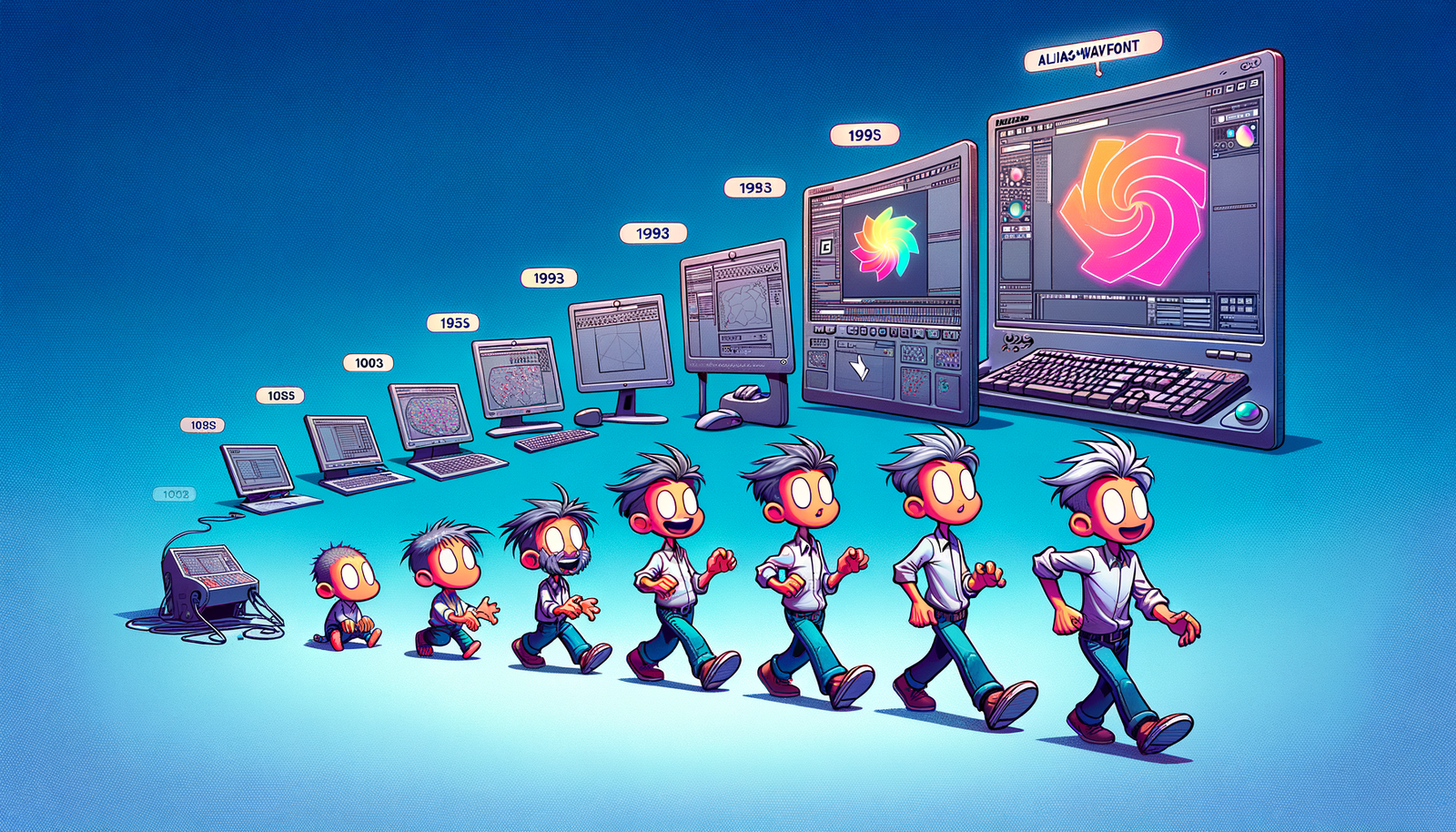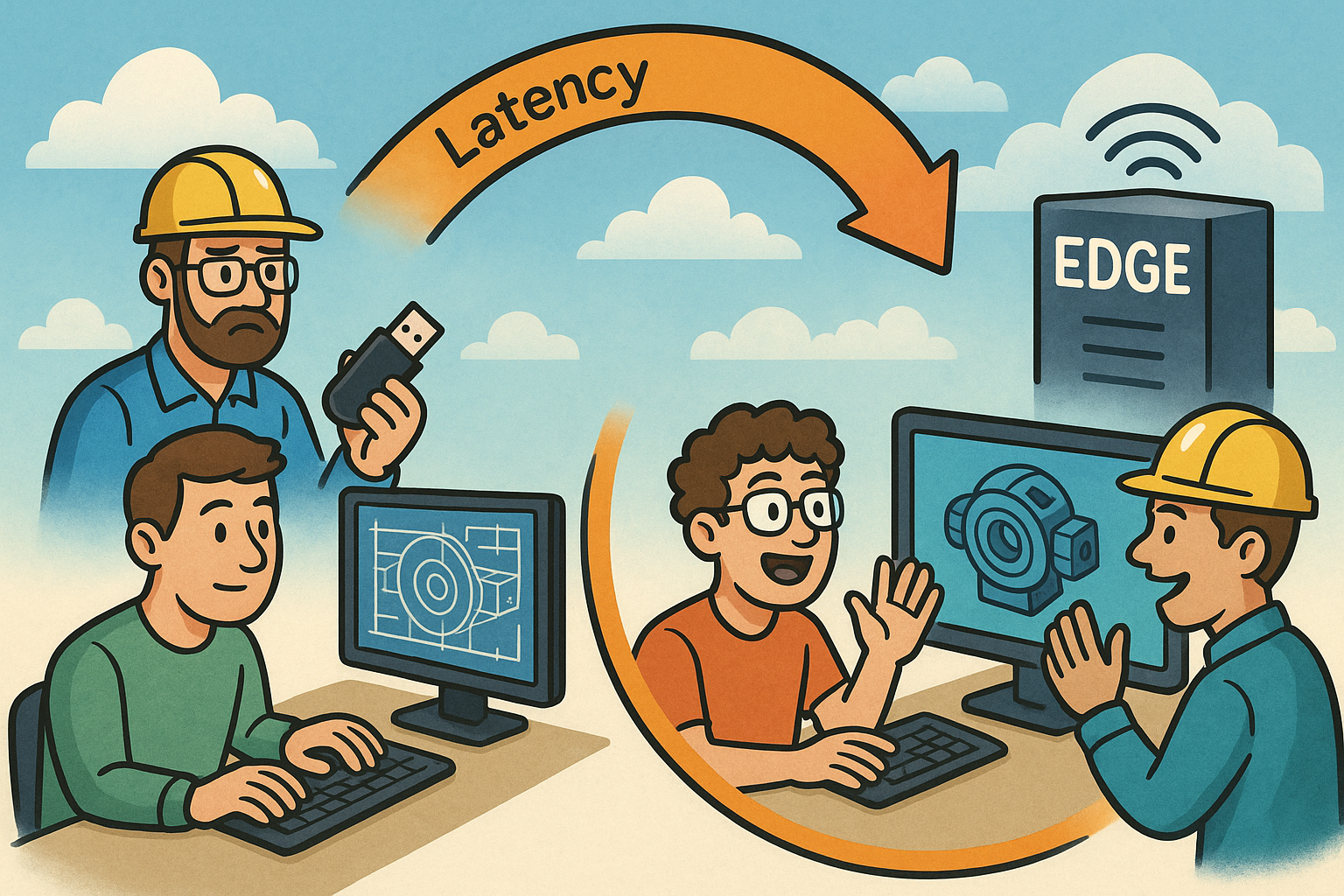Your Cart is Empty
Customer Testimonials
-
"Great customer service. The folks at Novedge were super helpful in navigating a somewhat complicated order including software upgrades and serial numbers in various stages of inactivity. They were friendly and helpful throughout the process.."
Ruben Ruckmark
"Quick & very helpful. We have been using Novedge for years and are very happy with their quick service when we need to make a purchase and excellent support resolving any issues."
Will Woodson
"Scott is the best. He reminds me about subscriptions dates, guides me in the correct direction for updates. He always responds promptly to me. He is literally the reason I continue to work with Novedge and will do so in the future."
Edward Mchugh
"Calvin Lok is “the man”. After my purchase of Sketchup 2021, he called me and provided step-by-step instructions to ease me through difficulties I was having with the setup of my new software."
Mike Borzage
Design Software History: The Evolution of Maya: From Alias|Wavefront to Industry Standard in 3D Graphics
August 05, 2024 5 min read


The Origins of Maya
Early Beginnings
The story of Maya, one of the most influential 3D computer graphics software applications, begins in the early 1990s. During this period, the field of 3D computer graphics and animation was rapidly evolving, with numerous innovations that transformed the industry.
The initial development of Maya can be credited to the collaboration of several visionary individuals and companies. The software was created by Alias|Wavefront, a company formed by merging two pioneers in the field: Alias Research and Wavefront Technologies. Key players in this endeavor included Alias Research co-founders Stephen Bingham, Nigel McGrath, and Susan McKenna, along with Wavefront Technologies co-founders Mark Sylvester, Larry Barels, and Bill Kovacs.
The early 1990s saw a surge in the demand for sophisticated 3D graphics and animation tools, driven by the burgeoning film, television, and video game industries. This context set the stage for the development of Maya, a software that would go on to revolutionize the industry.
Initial Release and Features
Maya 1.0 was officially released in 1998, marking a significant milestone in the history of 3D computer graphics software. The initial release of Maya introduced several core features that set it apart from existing software at the time.
- Comprehensive Toolset: Maya offered a wide range of tools for modeling, animation, rendering, and simulation, making it a versatile solution for various applications.
- Customizability: The inclusion of MEL (Maya Embedded Language) allowed users to script and customize their workflows, providing a high level of flexibility.
- Advanced Animation Capabilities: Maya's robust animation tools enabled users to create complex animations with ease, making it a preferred choice for animators.
Early adopters of Maya included leading studios in the film and video game industries, who recognized the software's potential to streamline their production processes and elevate the quality of their work.
Technological Innovations and Advancements
Advanced Animation Tools
One of the key factors that contributed to Maya's success was its advanced animation tools. The software introduced several features that significantly enhanced the animation process.
MEL (Maya Embedded Language) played a crucial role in this regard. MEL provided users with the ability to write scripts and automate repetitive tasks, thereby increasing efficiency. Additionally, MEL allowed for extensive customization of the software, enabling users to tailor it to their specific needs.
Another significant innovation was the use of procedural modeling and animation. This approach allowed for the creation of complex animations through the use of algorithms and mathematical functions, rather than manual keyframing. Procedural modeling and animation offered several advantages, including the ability to easily make changes and generate variations.
Geometric and Solid Modeling
Maya's geometric and solid modeling capabilities were another area where the software excelled. One of the standout features in this regard was the support for NURBS (Non-Uniform Rational B-Splines) modeling. NURBS allowed for the creation of smooth, curved surfaces, making it ideal for character modeling and other applications requiring high levels of detail.
In addition to NURBS, Maya also offered robust polygon modeling tools. Polygon modeling provided users with the ability to create complex shapes by manipulating individual vertices, edges, and faces. This approach was particularly well-suited for applications such as game development, where low-polygon models were required for real-time rendering.
The significance of Maya's modeling tools was underscored by its widespread adoption in the film and game industries. The software's ability to handle both NURBS and polygon modeling made it a versatile choice for a wide range of applications.
Another area where Maya made significant strides was in rendering and simulation. The software introduced several innovations in these areas, including advanced rendering algorithms and physics-based simulation tools. These features allowed users to create highly realistic images and animations, further cementing Maya's position as a leading 3D graphics software.
The Impact on Animation and Visual Effects (VFX)
Adoption by the Film Industry
Maya's impact on the animation and visual effects (VFX) industries cannot be overstated. The software quickly became a favorite among leading studios, who used it to create some of the most iconic visual effects in film history.
Numerous milestone films and projects prominently featured Maya, showcasing its capabilities and setting new standards for the industry. For example, Maya was used extensively in the production of "The Matrix" (1999), a film that revolutionized visual effects with its groundbreaking use of bullet time and other techniques. Similarly, "Avatar" (2009) relied heavily on Maya for its stunning visual effects, which played a crucial role in the film's success.
Maya's contributions to award-winning visual effects were recognized by industry professionals and organizations. The software received numerous accolades, including Academy Awards for Technical Achievement. Testimonials from industry professionals and studios further highlighted Maya's impact, with many praising its versatility, power, and ease of use.
Expansion into Other Industries
While Maya's adoption by the film industry was a significant achievement, its impact extended far beyond Hollywood. The software found applications in several other industries, further expanding its reach and influence.
In the video game industry, Maya became an integral part of the game development pipeline. Game developers used Maya to create highly detailed character models, environments, and animations, all of which contributed to the immersive experiences that players enjoyed. The software's support for both high-polygon and low-polygon modeling made it a versatile choice for game development.
Advertising and media were other areas where Maya made significant inroads. The software was used to create compelling commercials and media content, leveraging its advanced animation and rendering capabilities to deliver stunning visuals. Maya's ability to create photorealistic images and animations made it a valuable tool for advertisers and media professionals.
Education was another sector that benefited from Maya's capabilities. The software was included in the curriculum of many animation and VFX programs at universities, providing students with hands-on experience with industry-standard tools. This exposure prepared students for careers in the animation and VFX industries, ensuring a steady supply of skilled professionals familiar with Maya.
Maya’s Legacy and Evolution
Acquisition by Autodesk
In 2005, Alias|Wavefront, the company behind Maya, was acquired by Autodesk, a leading provider of design software. This acquisition marked a new chapter in Maya's history, bringing several changes and improvements to the software.
Under Autodesk's stewardship, Maya continued to evolve, with the introduction of new features and enhancements. Autodesk's resources and expertise helped to further refine Maya, ensuring that it remained at the forefront of 3D graphics software. The integration with other Autodesk tools and ecosystems also provided users with a more cohesive and streamlined workflow.
The transition from Alias|Wavefront to Autodesk was not without its challenges. Some users were initially concerned about the acquisition and its impact on Maya's development. However, Autodesk's commitment to maintaining and improving Maya quickly alleviated these concerns, and the software continued to thrive under its new ownership.
Continued Influence and Future Prospects
Today, Maya remains a cornerstone of the animation and VFX industries, with current versions offering state-of-the-art features that cater to the needs of professionals. The software continues to push the boundaries of what is possible in 3D graphics, with advancements in areas such as real-time rendering, virtual reality, and augmented reality.
Maya's role in the future of animation, VFX, and beyond is secure, with the software poised to remain a key player in these fields. The ongoing community support and plugin ecosystem further contribute to Maya's longevity, with users continually developing new tools and extensions that enhance the software's capabilities.
In conclusion, the history of Maya is a testament to the power of innovation and collaboration. From its early beginnings in the 1990s to its current status as an industry leader, Maya has consistently pushed the boundaries of what is possible in 3D graphics. The software's impact on the animation and VFX industries is undeniable, and its legacy will continue to shape the future of these fields for years to come.
Also in Design News

Live Performance Budgets: Real-Time Cost, Carbon, Energy and Lead-Time in CAD/BIM
December 11, 2025 14 min read
Read More
Design Software History: From File-Shuttling to Edge: The Latency Evolution of Collaborative CAD and Real-Time Visualization
December 11, 2025 13 min read
Read More
Cinema 4D Tip: Cinema 4D Soft Body Quick Setup & Parameter Tuning
December 11, 2025 2 min read
Read MoreSubscribe
Sign up to get the latest on sales, new releases and more …


